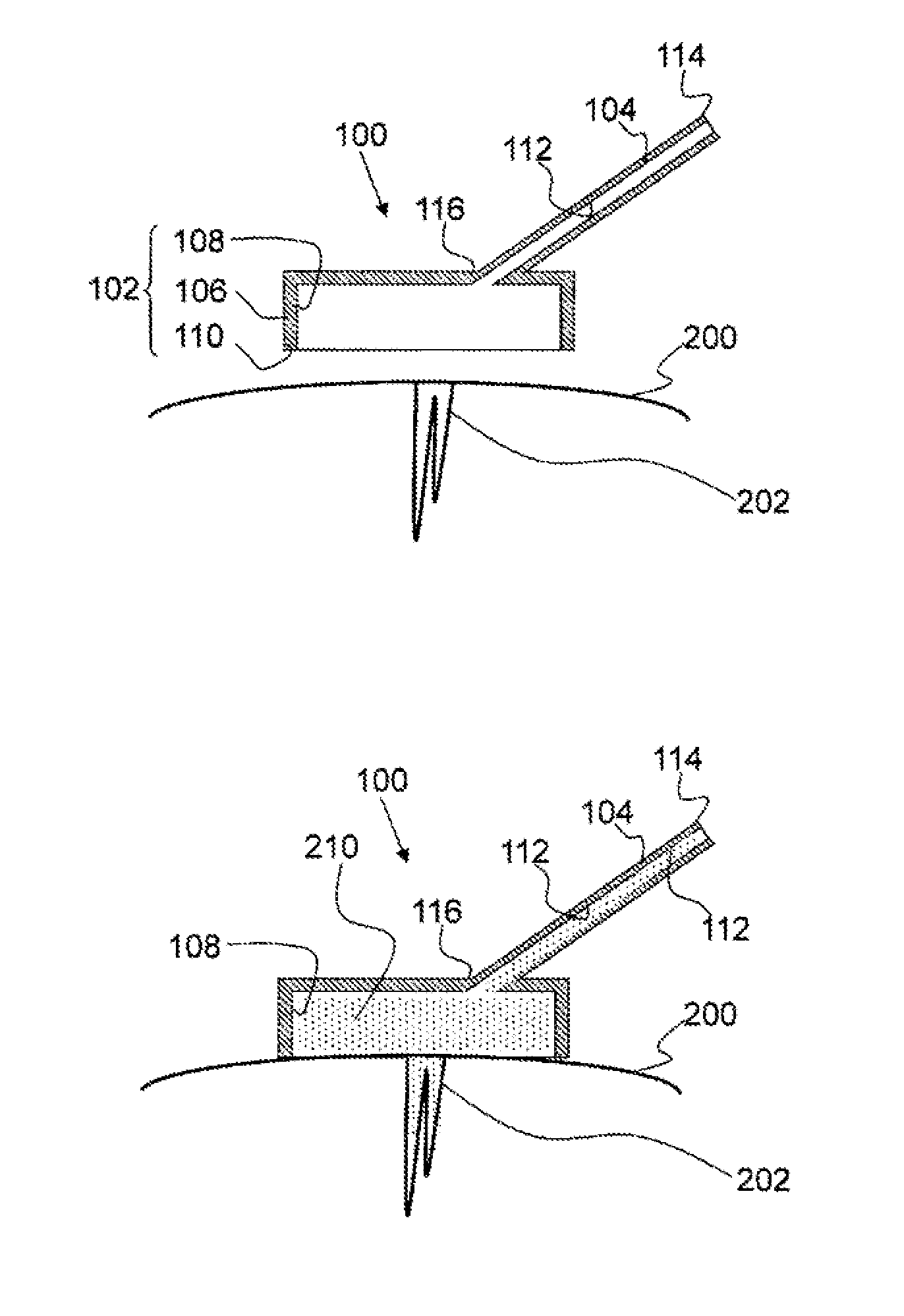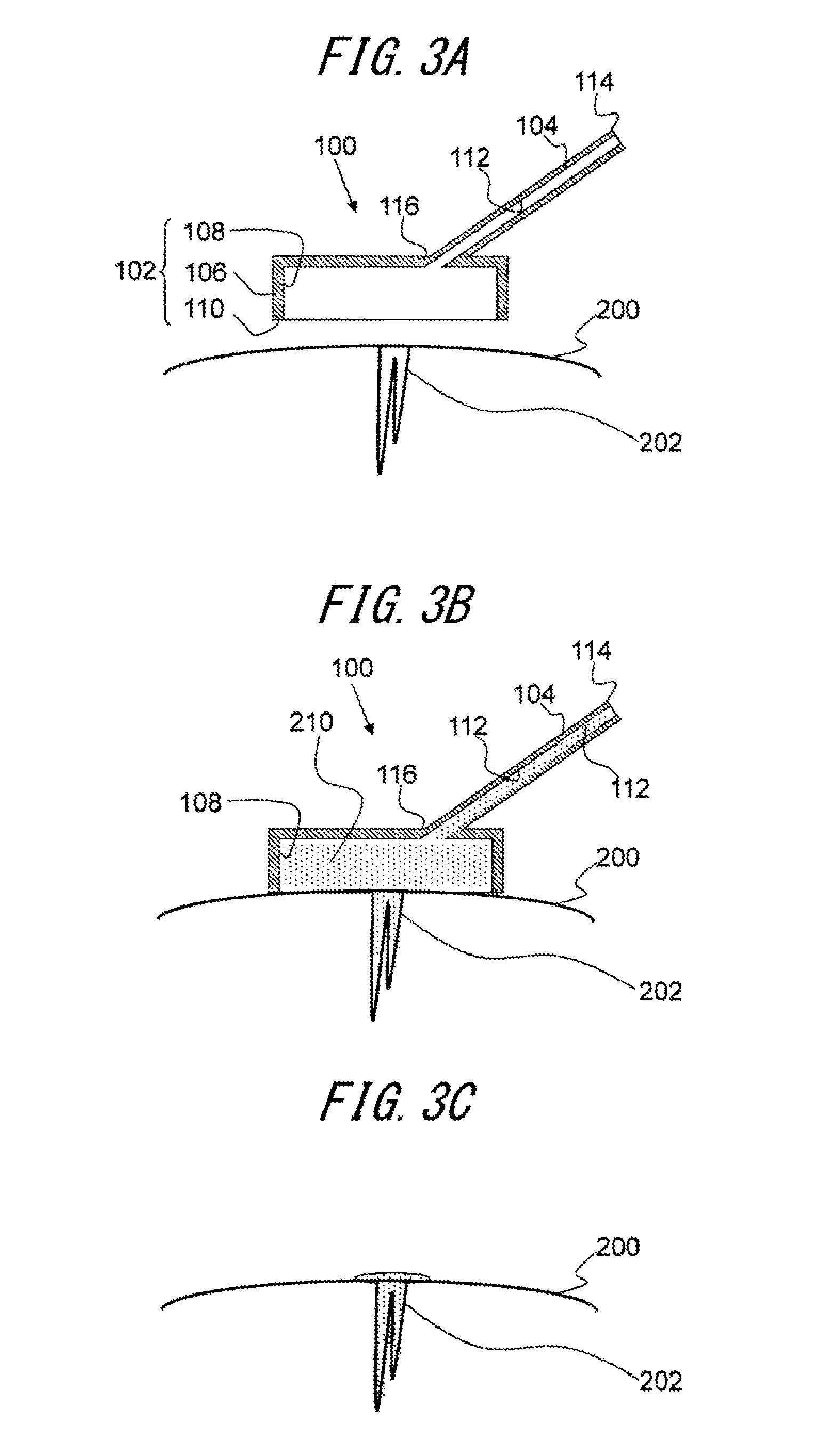Hemostatic agent applicator
a technology of hemostatic agent and applicator, which is applied in the field of hemostatic agent applicator, can solve the problems of obstructing the field of vision, applying gel to the incision surface, and affecting the effect of hemostatic agent removal, so as to reduce the amount of used hemostatic agent, effectively achieve hemostasis, and efficiently dispose of fluid hemostatic agen
- Summary
- Abstract
- Description
- Claims
- Application Information
AI Technical Summary
Benefits of technology
Problems solved by technology
Method used
Image
Examples
example 1
Fabrication of a Hemostatic Agent Applicator
[0086]The hemostatic agent applicator 100 illustrated in FIGS. 1 and 2 is manufactured as below, for example.
[0087]A polypropylene inlet having a length of 20 mm and an internal diameter of 2 mm is attached to a cylindrical tool body, which has a height of 7 mm and an internal diameter of 15 mm and has one open end, made of a transparent polymethylmethacrylate resin using a cyano acrylate adhesive such that the angle θ illustrated in FIG. 2 becomes 45°. Further, a skirt made of a silicone resin is mounted on a side of the open end part of the tool body by tightening. A top plate of the tool body is provided with an outlet having a diameter of 1 mm. In this way, the example of the hemostatic agent applicator 100 illustrated in FIGS. 1 and 2 is manufactured.
example 2
Hemostasis of an Incision Site of a Rabbit Using a Hemostatic applicator
[0088]An abdomen of a rabbit (Japanese white color species) put under general anesthesia is cut open, a liver is exposed, and an incision is made on the surface of the liver using scissors. The incision site is maintained at inclined angles of 0°, about 30°, and about 60°, and the skirt of the applicator fabricated in Example 1 is closely pressed against an affected part. In this state, the space of the tool body is filled with a fluid hemostatic agent (about 1 mL) manufactured by a method disclosed in Patent Literature 1 through the inlet of the applicator, and the pressed state is maintained for two minutes. Thereafter, the applicator is removed, and whether the fluid hemostatic agent flows out is verified while the inclination of the incision site is maintained. Based on whether the fluid hemostatic agent flows out, hemostatic effect is determined to be “strong” or “weak”.
[0089]A result of determination is sh...
PUM
 Login to View More
Login to View More Abstract
Description
Claims
Application Information
 Login to View More
Login to View More - R&D
- Intellectual Property
- Life Sciences
- Materials
- Tech Scout
- Unparalleled Data Quality
- Higher Quality Content
- 60% Fewer Hallucinations
Browse by: Latest US Patents, China's latest patents, Technical Efficacy Thesaurus, Application Domain, Technology Topic, Popular Technical Reports.
© 2025 PatSnap. All rights reserved.Legal|Privacy policy|Modern Slavery Act Transparency Statement|Sitemap|About US| Contact US: help@patsnap.com



